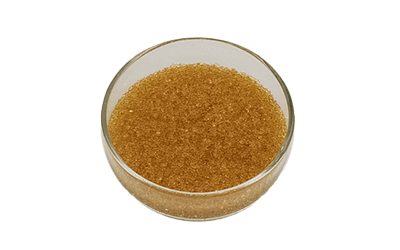What Is a Detergent?

Detergent is a general term for chemicals used to purify soil and water.
Detergents used for water in particular include coagulants. When a coagulant is used to treat polluted raw water, it collects and solidifies the pollutants and separates the water from the pollutants.
Detergents are used to obtain clean water.
Applications of Detergents
Water detergents are substances used to purify rivers, industrial and agricultural wastewater, and industrial water, and to improve water quality in livestock and aquaculture farms. In particular, they are used to remove contaminants such as heavy metal powders and organic matter in industrial wastewater. These products are also used for other purposes such as the prevention of bad odors.
Soil detergents include those that adsorb and purify harmful substances such as pesticides, PCBs, dioxins, and heavy metals, and those that activate microorganisms in the soil to break down pollution and produce nutrients that are good for plants.
Principle of Detergents
Detergents purify pollutants in a wide variety of ways, depending on the product. Each uses the effects of microorganisms, chemical reactions, charcoal, and other properties.
1. Coagulant
A coagulant is a substance that coagulates colloidal particles suspended in water. Water detergent treatment with flocculants is divided into the following two major processes.
- Coagulation reaction to precipitate fine flocs called foundation flocs
- Coagulation reaction in which the basic floc grows and coarsens
Since fine particles existing in nature are generally negatively charged, substances generally used as flocculants are those with positive charges. Specifically, they are inorganic flocculants such as aluminum salts and polyiron chloride. When a coagulant is added, the charge is neutralized and coagulation occurs, resulting in small clumps called foundation flocs.
In wastewater treatment, coagulants (polymers) are used to coagulate the flocs, while poly aluminum chloride (PAC) is mainly used in water treatment. Polymer flocculants are generally not used in wastewater treatment. This is because residual polymer flocculants can cause organic contamination of ion exchange and reverse osmosis equipment. After encouraging sedimentation of pollutants, clean water is obtained by solid-liquid separation.
2. Porous and Chelating Agents
Zeolite and charcoal with porous properties are effective in adsorbing harmful substances, precious metals, and odor-causing substances. Artificial zeolites also have a high cation exchange function and can improve soil by neutralizing acidity and removing ammonium ions from sewage and wastewater. Because of its strong fertilizer retention, it can be used as a soil detergent to improve the growth of crops and to cultivate high-value-added crops.
In the method using a chelating agent, metal ions in an aqueous solution react with the chelating agent to form a complex that is insoluble in water, thereby removing the ions. By using a chelating agent that selectively binds to heavy metals, it is possible to remove mercury, cadmium, lead, chromium, etc.
3. Microorganisms
Aerobic microorganisms can be used to absorb and decompose organic matter such as VOCs through the power of microorganisms in the water or indigenous to the area. Substances that activate the decomposition action of microorganisms, such as natural minerals, and microbial preparations fall under this category. This method is clean and harmless to the natural environment as it does not use chemical substances.
Types of Detergents
Types of detergents include the following
- Coagulants that precipitate substances cause pollution by coagulation reaction
- Porous materials that adsorb harmful substances
- Microorganisms that activate microorganisms to promote the decomposition of substances causing pollution
Each method has different principles and types of pollution that can be purified, so it is necessary to select the one that best suits the purpose. In addition, the water purification method to be used differs between wastewater purification and water purification. Since there are powder, granular, gel, and other forms available, it is important to select the most appropriate formulation.